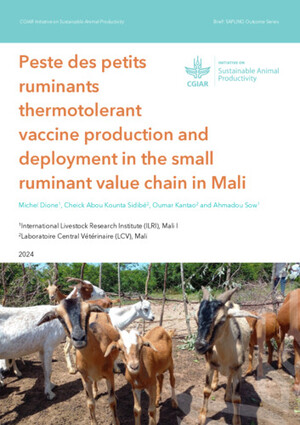
Invited review: Genomic selection for small ruminants in developed countries: How applicable for the rest of the world?
Abstract
Improved management and use of estimated breeding values in breeding programmes, have resulted in rapid genetic progress for small ruminants (SR) in Europe and other developed countries. The development of single nucleotide polymorphisms chips opened opportunities for genomic selection (GS) in SR in these countries. Initially focused on production traits (growth and milk), GS has been extended to functional traits (reproductive performance, disease resistance and meat quality). The GS systems have been characterized by smaller reference populations compared with those of dairy cattle and consisting mostly of cross- or multi-breed populations. Molecular information has resulted in gains in accuracy of between 0.05 and 0.27 and proved useful in parentage verification and the identification of QTLs for economically important traits. Except for a few established breeds with some degree of infrastructure, the basic building blocks to support conventional breeding programmes in small holder systems are lacking in most developing countries. In these systems, molecular data could offer quick wins in undertaking parentage verification and genetic evaluations using G matrix, and determination of breed composition. The development of next-generation molecular tools has prompted investigations on genome-wide signatures of selection for mainly adaptive and reproduction traits in SR in developing countries. Here, the relevance of the developments and application of GS and other molecular tools in developed countries to developing countries context is examined. Worth noting is that in the latter, the application of GS in SR will not be a ‘one-size fits all’ scenario. For breeds with some degree of conventional genetic improvement, classical GS may be feasible. In small holder systems, where production is key, community-based breeding programmes can provide the framework to implement GS. However, in fragile growth systems, for example those found in marginal environments, innovative GS to maximize adaptive diversity will be required. A cost-benefit analysis should accompany any strategy of implementing GS in these systems.
Citation
Mrode, R., Tarekegn, G.M., Mwacharo, J.M. and Djikeng, A. 2018. Invited review: Genomic selection for small ruminants in developed countries: how applicable for the rest of the world? Animal 12(7):1333-1340.










